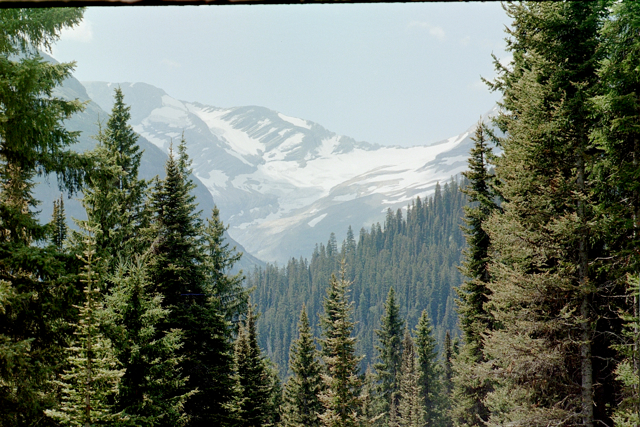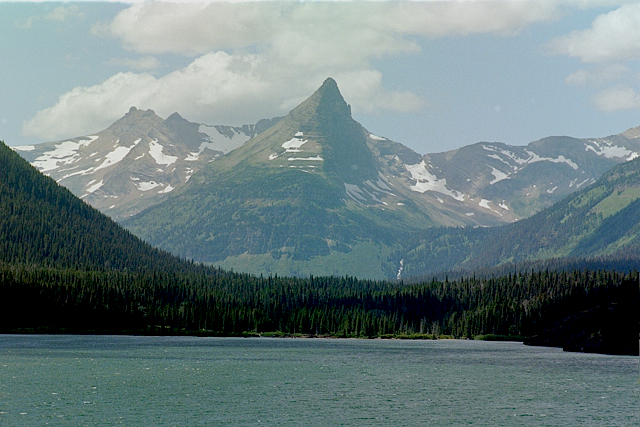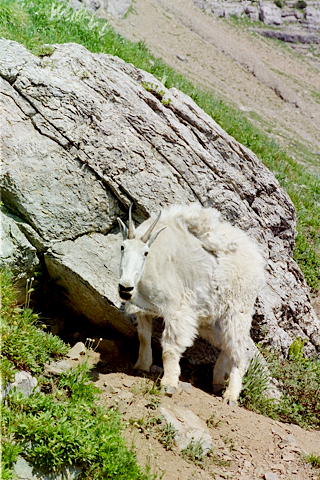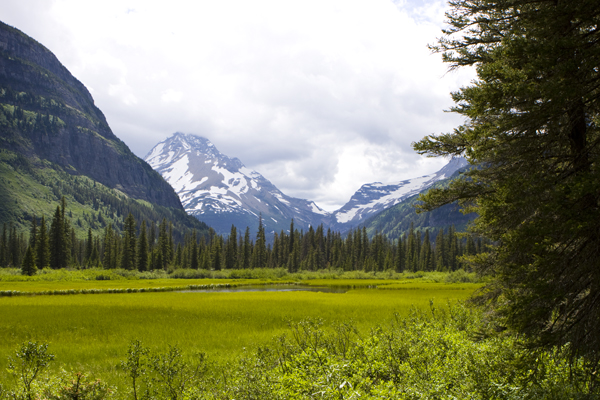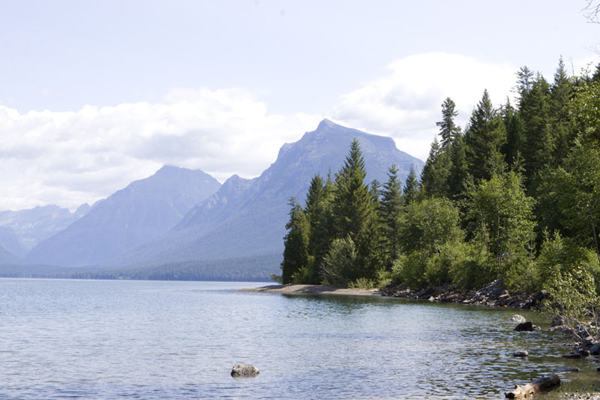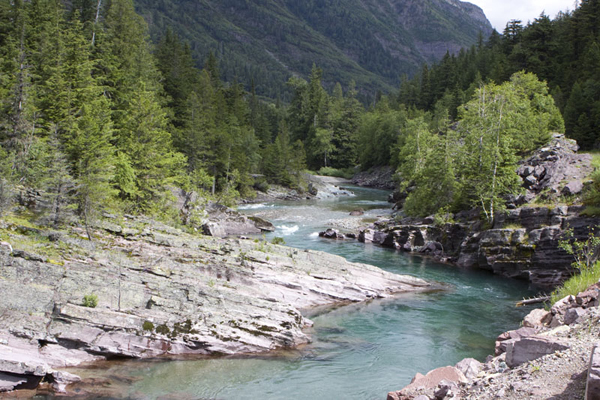Report: Glaciers Disappearing From Glacier National Park

Glacier National Park
[Note: I shot all these photos in Glacier NP. The air is hazy due to many fires in the Rockies that summer.]
A superb must read Report by the Rocky Mountain Climate Organization brings really bad news (excerpts from Executive Summary of Report below – although the Report has wonderful photography, the photos are mine. The haze in some shots was due to forest fires in southern Rockies):
A loss of ice and snow in the park is likely. Because of human-caused changes in our climate, Glacier could lose all or nearly all of its glaciers, which shaped the park and after which it is named.“ perhaps in the relatively near future. Seven years ago, scientists projected that even modestly hotter summers could eliminate by 2030 all glaciers in one basin in the park. Since this study was published, the glaciers in the basin have melted faster than projected. Now, one of the study’s authors believes they might be gone in just 10 years. According to an April 2010 update by the U.S. Geological Survey, of the 37 named glaciers in the park, only 25 remain large enough to still be considered glaciers. Of the 12 that have melted away, 11 have done so since 1966.
A hotter climate is also expected to reduce snowfall and snowpack accumulation in the park. One recent study projects that near the end of this century, peak snowpack levels in the park may be reached 41 days earlier than in mid-20th century, and that snow could cover the ground for about 70 fewer days a winter. With mountains not snow-capped as much or as long into the summer, the scenery that draws most visitors to Glacier would be affected.
A loss of water in the park in summer may result from higher temperatures, earlier snowmelt, and a loss of summer meltwater from glaciers, with widespread ecosystem effects. (See section 5.)
A loss of wildlife in Glacier could result fromhuman-caused climate change. (See section 6.) This could disrupt the unique mix of natural wildlife the park now supports, which offers Americans the best chance they have in the lower 48 states to see the full range of mammal predators present at the time of European settlement of the continent, including grizzly and black bears, wolves, lynx, wolverines, mountain lions, and more, as well as other large mammals including mountain goats, bighorn sheep, and elk. The park’s staff is concerned that climate change could lead to “wholesale changes in species composition.” One study suggests that Glacier could experience the second largest influx of new mammal species of eight studied national parks, as ecosystem changes could lead to new, warmer-environment species moving into the park. Wolverines and lynx are at particular risk in the park, as for both spring snow cover apparently is an essential habitat requirement. Grizzly bears, bighorn sheep, mountain goats, pikas, ptarmigan, and trout could also be harmed by changes in the climate.
A disruption of plant communities in the park also could take place. (See section 7.) Some forests in the park could be replaced by grasslands. Other forests could decline because of hotter, drier conditions. The park’s expanses of alpine tundra, meadows, and wildflowers, plus a rare cedar-hemlock ecosystem, could all be reduced. Infestations of insects such as mountain pine beetles could increase.
More wildfires are likely, leading to more campfire bans, closures of trails, and reduced visitation. (See section 8.)
A loss of fishing can result if high water temperatures stress trout enough to lead to fishing closures or to elimination of trout from certain streams. (See section 9.)
More downpours and flooding are likely to be caused by increases in extreme storms, which can result in closures of park areas and reduced visitation. (See section 10.)
The otherwise superb Report was polluted with this piece of “clean coal” garbage by NRDC:
Accelerating the development and deployment of emerging clean energy technologies to lower long-term emission reduction costs. That means incentives and investments in renewable electricity, lowcarbon fuels, and carbon capture and storage, including a federal renewable energy standard, as well as infrastructure upgrades to support transmission capacity for these renewable assets. Finally, regulations to require any new coal-fired power plant to capture and permanently geologically sequester at least 85 percent of its carbon dioxide emissions, along with state and federal regulatory frameworks for site selection, operation, and monitoring for carbon capture and geologic storage systems.
There is no such thing as “clean coal”. World renowned global warming scientist Dr. Jim Hansen has called NRDC out on this.
NRDC should be ashamed of advocating for it via the CCS technological boodoggle.
